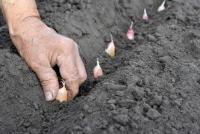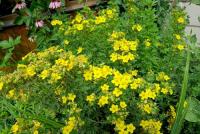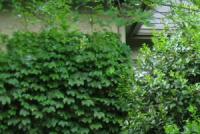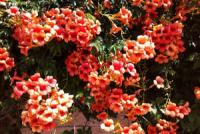Shrubs dwarf. Low-growing ornamental shrubs and shrubs as a garden decoration
Undersized ornamental shrubs and shrubs can be considered as an independent element of landscape decoration, as well as in combination with trees and tall bushes. In the first case, gardeners can decorate small areas with a large variety of bushes, in the second, they can add a zest to the garden or hide the flaws of the landscape.
1 Low-growing ornamental shrubs for summer cottages and half-shrubs - what is the difference?
Low ornamental shrubs should be distinguished from dwarf shrubs. In height, they may be the same, however, the shrubs tend to creep only from the bottom, in the upper part, the grassy shrubs. The most famous examples of dwarf shrubs are lavender, sage, heather, blueberry ...
In trees and shrubs, including short, all aboveground parts, except leaves, are perennial. In their overwhelming majority, undersized shrubs are artificially bred by breeders, and you can almost always find a tall representative of a particular plant.
2 Landscape decoration with shrubs and undersized bushes to give
In the composition with high ornamental shrubs for giving their low-growing relatives can perform an important function: tall shrubs with improper pruning or lack of light can lose the lower part of the foliage. Bottom-bent branches are unlikely to look against the riotous foliage, and in such cases low-growing shrubs can not better cover the damaged area.
In addition, low-growing shrubs and dwarf shrubs are used to form borders, rabatok, low hedges and flower beds decoration. Most often, for these purposes, such ornamental undersized flowering shrubs are used, such as the hollow-leaf mahonia, dwarf barberries and spireas, polyanthus roses, lavender, sage, hyssop, santolin and heather, as well as undersized conifers.
3 Low-growing shrubs and dwarf shrubs - plant care
General recommendations for the care of plants are quite simple, because in general they rarely get sick and are resistant to pests. Semishrubs like direct sunlight and well-drained soil, do not require frequent watering. Light spring pruning is good for everyone. low shrubs and subshrub - due to her plants grow more intensively, form strong crowns.
Low-growing shrubs are well propagated by cutting, half-shrubs multiply by splitting the bush, layering and sowing seeds. It is best to start planting shrubs in early spring, as soon as the snow melts, because the vegetative processes in shrubs begin much earlier than in trees, the same rule applies to shrubs.
From the dwarf shrubs, lavender stands out for its particular whimsy. It prefers sandy soils and does not tolerate the proximity of water bodies or high groundwater levels. It will not grow in acid soils, so if in doubt, it is better to plant some wood ash or lime when planting. It doesn’t hurt to regularly add to the soil and compost - it will provide good porosity that lavender needs. If you are going to grow lavender in a cool climate, it is best to do it in pots. At the slightest sign of a quick cooling, the flowerpots should be transferred to a warm, dry place.
It is best to propagate lavender by cutting: the necessary number of cuttings are separated from the bush, deepened by several centimeters into loose soil or a special soil mixture, covered with foil and regularly moistened. We carefully dig up the rooted cuttings and transplant them to the right place. It should be remembered that adult lavender bushes do not tolerate the transplant. In extreme cases, dig up the roots with a good piece of land.
Sage and heather does not interfere with sheltering for the winter. If you want to strengthen the sage bushes, do not let its seeds ripen - in this case, the next spring bush will grow with even greater force.
Dwarf barberries and spireas perfectly tolerate pruning, so you can get any shape from them. To the soil and watering, they are not demanding.
Polyanthus roses are also particularly pleased gardeners who have little time to care for the garden. In addition to their aesthetic qualities, these stunted shrubs are cold-resistant, they are not afraid of drought or excessive moisture, they are resistant to fungal diseases. Periodic pruning and fertilization of the soil - that's all they need.
Low-growing ornamental shrubs can be divided into dwarf forms created by breeders and natural species, maternal forms that are small in size. Both those and others are widely used in herbal compositions created for open ground and for cultivation in containers, or in winter gardens.
Low-growing ornamental shrubs are used for:
- creating borders or edging for flower beds;
- flower arrangement element (for beds with perennial plants);
- dendrological element of the composition (with other shrubs and trees);
- creating compositions with stones (rock gardens, rockeries);
- growing in containers that adorn the terrace, balcony or courtyard;
- creating clumps - homogeneous groups of shrubs planted on the lawn.
Dwarf Bushes Forms

Half popular in landscape design bushes there are dwarf and / or creeping forms. Varieties of spirea, honeysuckle, euonymus, barberry, juniper, rhododendron, cotoneaster, rose, and many other plants are low-growing ornamental shrubs that are not sated in height of 30-50 cm.
Usually, such forms of plants are more capricious, and require more care than their big relatives. They are worse tolerated by drought and lack of irrigation, due to the less developed root system. Such low-growing varieties, as a rule, are less frost-resistant and more prone to disease.
All these disadvantages are compensated by the beauty, grace and refinement of small bushes, which, due to their size, can be grown on a small patch of soil, or in a pot, on a balcony, or in a winter garden.
Note: creeping or ampelous ornamental shrubs that are not tall, but large, belong to another category: creeping or ampelous (falling), for example cotoneaster, juniper.
Kustarnichki - created by nature a small miracle
To undersized ornamental shrubs include natural forms of perennial woody plantsHaving several branching shoots, without a main trunk. In their natural habitat, the size of shrubs does not exceed half a meter, but usually they are even lower.
The main difference from the dwarf forms of large plants is that the shrubs are hardy and unpretentious. Due to the natural immunity, not lost during breeding, the shrub is cold-resistant, it is well tolerated in heat, it hurts less and requires less care.
Note: when growing shrubs, one should make a discount on their ecology and natural climate zone. For example, cranberries, will need high soil moisture, as it grows in nature in swamps. And lavender, being a southern plant, will tolerate a lack of moisture, but will be sensitive to severe frosts.
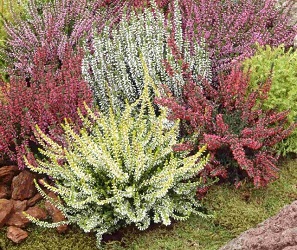
Of the shrubs are very popular members of the heather family (Ericaceae). Among them there are decorative flowering representatives - Erica, Heather, some rhododendrons, podel. With bright and edible fruits - lingonberry, cranberry, blueberry, dropsy. In addition, shrubs from the heather family are evergreen. They do not shed their leaves, animating plant compositions even in late autumn, when other plants have already wilted. Or in early spring, when other shrubs have not yet begun to vegetate, shrubs of heather, already turn green.
Other families can also boast the presence of small natural types of bushes. In the family of Labiaceae (Lamiaceae) - Thyme, Rosemary, Lavender. In the family of pink (Rosaceae) - cloudberries, bone and silverweed.
Attention! Only today!
Coming to greenhouses, a person is faced with a huge variety of these same shrubs. They exist a great many.
- frost-resistant;
- blooming;
- undersized;
- fast growing;
- wild;
- high.
This is not the entire list of shrubs, which can now be planted on their summer cottage.
Flowering ornamental shrubs are also distinguished by a special variety, ranging from flowering all summer or spring, and ending with the shape and height of the shrub. Below you can see the photos and names of ornamental shrubs for summer cottage.
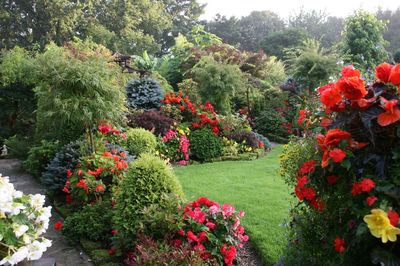
Let's consider what kind of ornamental flowering shrubs to plant in the country, so that they are not dependent on the types of climate.

Shrub Buddley will bloom all summer, and create a light, unobtrusive scent throughout the garden. The care and temperature of the climate in which it grows is not important to him; the shrub will feel fine even at +30 and +10 degrees.
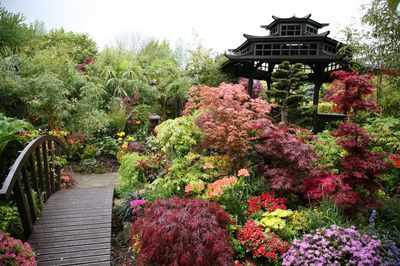
One more flowering shrub - Spirea. It blooms almost all summer, and its flowers can be of the most diverse forms, ranging from spherical (most familiar to gardeners) to cone-shaped. The plant over time acquires a tree form.
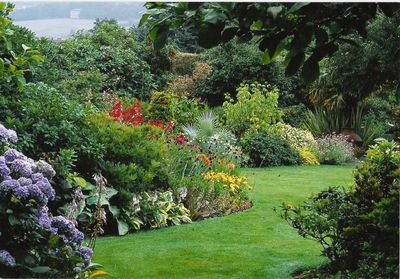
Do not forget about the usual and beloved by many shrubs, such as lilac, wild rose or even viburnum. Currently, breeders have tried to bring lilac varieties. Which do not take up much space. And wild rose and viburnum, in addition to beauty, will also bring benefit in cold winter evenings. In addition, they are also not whimsical and do not take up much space.
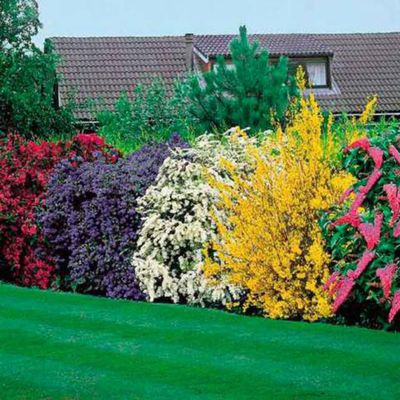
What to look for when choosing frost-resistant plants?
Frost-resistant ornamental shrubs to give will be to those gardeners who have much more cold days than warm ones. When choosing frost-resistant shrubs need to pay attention to the barberry. Firstly, it is unpretentious to the weather conditions, secondly, it bears fruit, and thirdly, it attracts many birds to itself, which in turn contributes to the destruction of pests.

Virtually all types of holly are also considered to be frost resistant. It differs from other shrubs with its incredibly rich green foliage, and later with small red berries. The only thing you should pay attention to is that bicolor varieties may lose their brightness in the shade of color. They would be better planted in the sun. Frost-resistant ornamental shrubs for the garden can be seen below in the photo.
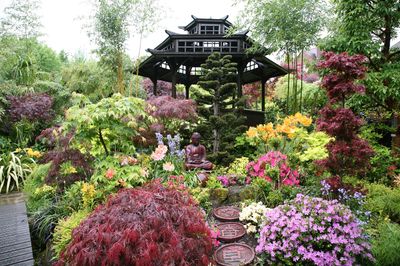
What low-growing shrubs to choose?
Small undersized bushes do not take up much space and look very beautiful. Shrubs up to 1 meter in height are considered as undersized. Shrubs can be the most diverse, such as Japanese low quince, will look great as a living fence. At the beginning of flowering is replete with bright red flowers, and later it is decorated with yellowish fruits. It is frost-resistant that is one of pluses.
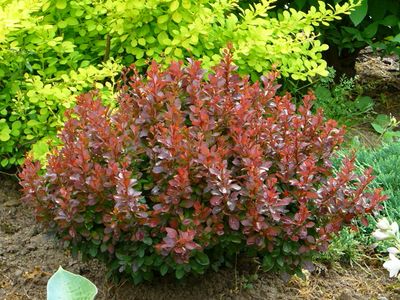
Volnnik- very beautiful plant, but not suitable for lovers to eat berries. It is extremely poisonous, so lovers should try to avoid the berries. The plant should be watered at least once a week, it can die from drought. In the photo below you can see it during the flowering period.
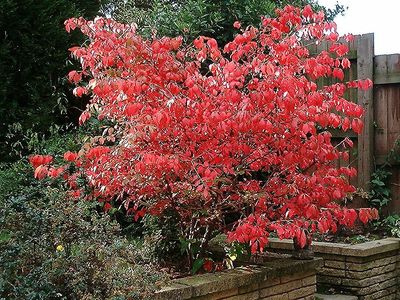
Graceful deytion reaches a height of 80 cm. Small flowers are united by one inflorescence, the plant spreads out on the ground, enveloping everything around with a wonderful aroma.
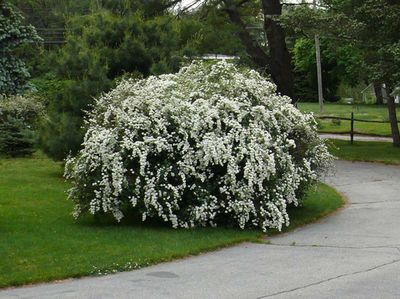
Horizontal cotoneaster is one of the most beautiful undersized shrubs, which compensates for its slow growth with extraordinary beauty and frost resistance. Small bright green leaves later replace the small berries of a creamy pink color.
Common spruce will become a beautiful decoration at any summer cottage, and thanks to the efforts of breeders, it can reach only 80 cm in length. As many know, it tolerates winter well, and against the background of a snowy winter, the evergreen shrub looks great.
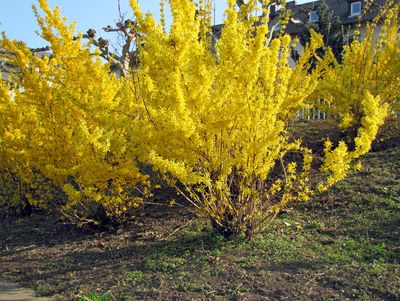
What plants are suitable for quickly creating a hedge?
Fast-growing shrubs deserve special attention. You can plant, for example, dogwood, which quickly grows and will yield by the end of the summer. One of fast growing shrubs is also a purple willow or a goat willow. The only disadvantage is that they require constant watering, because they do not like the heat. One of the most beautiful fast-growing shrubs are roses. With proper garter and shearing, you can achieve an unusually beautiful hedge.
Clematis will look great as a living bright blue hedge. Caring for them is quite difficult, so that beginners may not be suitable. Care should be taken to ensure that the bush does not peremerz, especially the part that has not yet risen to the surface. In addition, clematis bushes do not tolerate excessive moisture. In the photo you can see an example.
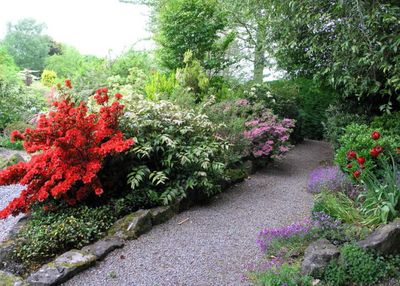
Decorative ivy will quickly and beautifully create hedge in places where it is needed. For his planting should not use too shaded places, in this case, he may lose his soil. Absolutely unpretentious to watering and cutting the bushes.
Whom to visit if there are a lot of wild bushes on the site?
Wild shrubs often serve as food for birds and for people. For example, the fruits of barberry ordinary love birds to eat. In height the bush can reach up to 2 meters.
The round leafberry is unpretentious to weather changes. Fruits in August, medium-sized fruits, but very sweet.
The turn is another bright representative. wild shrubs. Its fruits can be used for medicinal purposes, and can also be used as the main liqueur for tincture or liquor. After the first frost its fruits get a pleasant tart-sweet taste. The photo below shows the thorns.
Aronia red or black chokeberry is absolutely unpretentious, and its fruits are happy to eat birds. Reaches a height of 1.5-2 meters.
High growing shrubs - pros and cons
The most common are high-growing conifer shrubs. They provide an evergreen shrub that, when proper landing, able to protect against strong summer heat. However, they should be planted at a distance of at least 2.5 meters from the walls of a residential building. If the shrub grows, it can damage the walls of the house. All kinds of Philadelphus, popularly known as the Chubushnik, are very common. Leaves can range from small, rounded, to island-covered, oval. Chubushnik blooms beautiful white flowers that have a fragrant smell. The plant can reach a length of up to 3.5 meters.
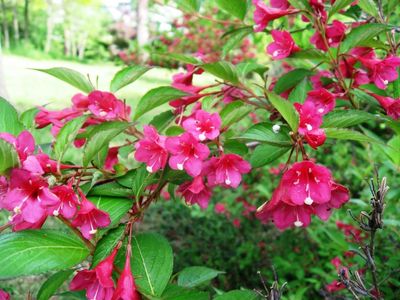
Before choosing an ornamental shrub, you need to pay attention to such factors:
- soil moisture;
- soil shading;
- the area required for healthy growth of shrubs.
These are all factors to consider when planting small beautiful trees in the country.
Which shrub is suitable for your country house, and which shrubs to plant in order to get a crop, you can find out about it in the article.

